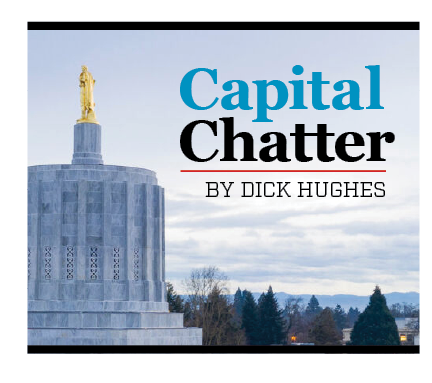Capital Chatter: Oregon gains new state agency
Published 5:00 pm Thursday, July 14, 2022

- capital chatter logo
You probably didn’t notice what happened in state government overnight between June 30 and July 1.
Gov. Kate Brown gained a state agency under her direct control. Emergency Management went from a longtime office housed within the state Military Department to becoming the independent Department of Emergency Management.
Trending
“It really elevates emergency management as a core function of government,” OEM Director Andrew Phelps told me. “Our mission didn’t change. Our job of preparing for, mitigating against, responding to and recovering from disasters really stayed the same.”
The evolution from Office of Emergency Management to a department will affect Oregonians. But mostly it will occur behind the scenes, including strengthening training, expanding staffing and modernizing the role of emergency management.
“Emergencies and disasters, they’re not natural. We sometimes hear them called natural disasters, but that’s not accurate. Emergencies and disasters are the results of hazards that impact or intersect with where we build and how we build. …
“Wildfires become disasters when they burn into that wildland-urban interface and we haven’t done enough to reduce the risk. We haven’t done enough to create defensible space or build with more fire-resistant materials,” Phelps said.
“My hope is having us as a cabinet-level department – a department that’s at a peer level with other state agencies – it allows us to be more intentional on that risk-reduction aspect of our work as emergency managers and influence those conversations about how we build and where we build. What investments we as a state choose to make or choose not to make. Those all play such a huge role in whether or not a hazard is simply a hazard or a hazard that leads to a disaster.”
Emergency management has been a complicated, and often convoluted, system in Oregon. It involves cities, counties, tribes, nonprofits, businesses, state agencies and the federal government. Tensions and difficulties, which vexed local officials and legislators alike, were reflected in state audit reports and the state’s response to the COVID-19 pandemic.
Trending
“Sometimes good people, wanting to do the right thing, end up doing the wrong thing, because structures get in the way and there are overlapping authorities and people don’t actually know who is in charge,” Rep. Paul Evans, D-Monmouth, said at a legislative hearing on Feb. 11, 2021 on House Bill 2927.
“And quite frankly, agencies trying to continue [their] main mission, sometimes find themselves actually not either being successful at the day-to-day stuff and not being successful at supporting the emergency mission.”
Evans, who chaired the House emergency management committee, was the driving force behind the bipartisan HB 2927. It shifted OEM to a department this year and the Office of State Marshal to a department next year from under Oregon State Police, as well as making other changes to clarify roles. The product of discussions since 2017, the 78-page bill passed the Oregon House with unanimous support and the Senate with four “no” votes.
Oregon is a lovely state. But virtually every square inch has a complex hazard profile, which could include potential for fires, windstorms, excessive heat, ice or snowstorms, landslides, volcanic eruptions, dam collapses, earthquakes, tsunamis, chemical spills, pipeline ruptures or other events.
It’s a misconception that OEM runs disaster response. Who’s in charge will vary but is guided by emergency plans. If the governor declares an emergency, it is Phelps’ job to marshal state resource and ensure that agencies provide the needed assistance. He also is the point person for federal disaster response.
Much of OEM’s work is with communities and agencies in building collaboration and getting ahead of potential emergencies.
“We think of ourselves in emergency management at the state level as kind of the conductors of the orchestra. We don’t play all the instruments,” Phelps said. “But we make sure that everyone has their instruments, that they know how to play them. That they’ve got the same piece of music. That they’re stopping and starting at the same time, playing at the same volume and tempo and in the same concert hall.”
That should mean Oregon communities, whether Portland or Pendleton, Astoria or Ashland, are treated more equitably in emergency preparation and management.
“We know that here in Oregon and really across the nation, disasters don’t impact everyone the same. Different communities have different capacity to withstand shock and stresses of a bad day,” Phelps said.
“Historically, our more marginalized communities, underserved communities, fare much worse after a disaster. And those divides that exist on a blue-sky day in our community are further exacerbated when we have an emergency or disaster.”




